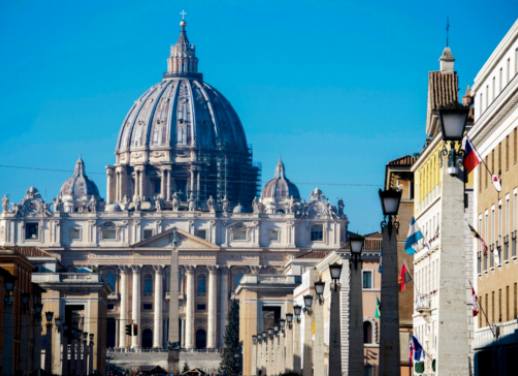Vatican City, the smallest independent state in the world, holds immense religious and cultural significance as the center of Catholicism. Within its borders lies the iconic St. Peter's Basilica, a treasure trove of religious art and historical artifacts that draw millions of visitors each year. The papal conclave, held within the Vatican's walls, is a centuries-old tradition that culminates in the election of a new pope. As a focal point for Catholic pilgrimage, St. Peter's Basilica is of utmost importance to believers worldwide, symbolizing faith, history, and tradition in one magnificent structure.

Vatican City as the Center of Catholicism
Vatican City, the smallest independent state in the world, holds a special place in the hearts of Catholics worldwide as the center of Catholicism. It serves as the spiritual and administrative headquarters for the Roman Catholic Church, with the Pope as its leader. The city-state is home to numerous important religious and cultural sites, including St. Peter's Basilica and the Vatican Museums, which attract millions of visitors each year. The Vatican's influence extends far beyond its physical boundaries, as it plays a crucial role in shaping the beliefs and practices of Catholics around the globe.
Religious Art and Treasures within St. Peter's Basilica
Within the walls of St. Peter's Basilica lie some of the most significant religious art and treasures in the world. From the stunning Michelangelo-designed dome to the intricate mosaics adorning the walls, every corner of the basilica is filled with pieces that hold deep religious and cultural meaning. Visitors can marvel at masterpieces like Michelangelo's Pieta and Bernini's Baldacchino, each representing the pinnacle of artistic achievement in their respective time periods. The basilica also houses important relics, such as the supposed remains of St. Peter himself, making it a place of pilgrimage for Catholics from around the globe. Overall, the religious art and treasures within St. Peter's Basilica serve as a testament to the rich history and significance of the Catholic faith.
Papal Conclave and the Election of a New Pope
The Papal Conclave is a centuries-old tradition in the Roman Catholic Church where the College of Cardinals gathers to elect a new Pope. This process takes place in the Sistine Chapel, located within Vatican City, and is guided by strict protocols and secrecy. The cardinals convene after the death or resignation of a Pope to discern the will of the Holy Spirit and select the next leader of the Catholic Church. The conclave begins with a solemn mass, followed by voting sessions in which the cardinals cast their ballots. Once a candidate receives a two-thirds majority, he is elected as the new Pope. The chosen cardinal then accepts his election, chooses a papal name, and appears on the balcony of St. Peter's Basilica to greet the faithful and impart his first papal blessing. The Papal Conclave is a significant event not only for Catholics but for the entire world, as the Pope is considered the spiritual leader of over a billion people worldwide.
Importance of St. Peter's Basilica in Catholic Pilgrimage
St. Peter's Basilica holds immense importance in Catholic pilgrimage due to its historical significance as the burial site of St. Peter, one of the twelve apostles of Jesus Christ. Pilgrims from around the world visit the basilica to pay their respects to the first pope and to deepen their spiritual connection to the Catholic faith. The basilica also serves as a symbol of the unity of the Catholic Church, drawing pilgrims together in their shared beliefs and practices. Additionally, the magnificent architecture, artwork, and relics housed within the basilica create a sacred and awe-inspiring atmosphere that elevates the pilgrimage experience for visitors seeking spiritual enrichment and renewal. By embarking on a pilgrimage to St. Peter's Basilica, Catholics can strengthen their faith, deepen their understanding of the Church's teachings, and forge a deeper connection to the history and traditions of their religious heritage.
